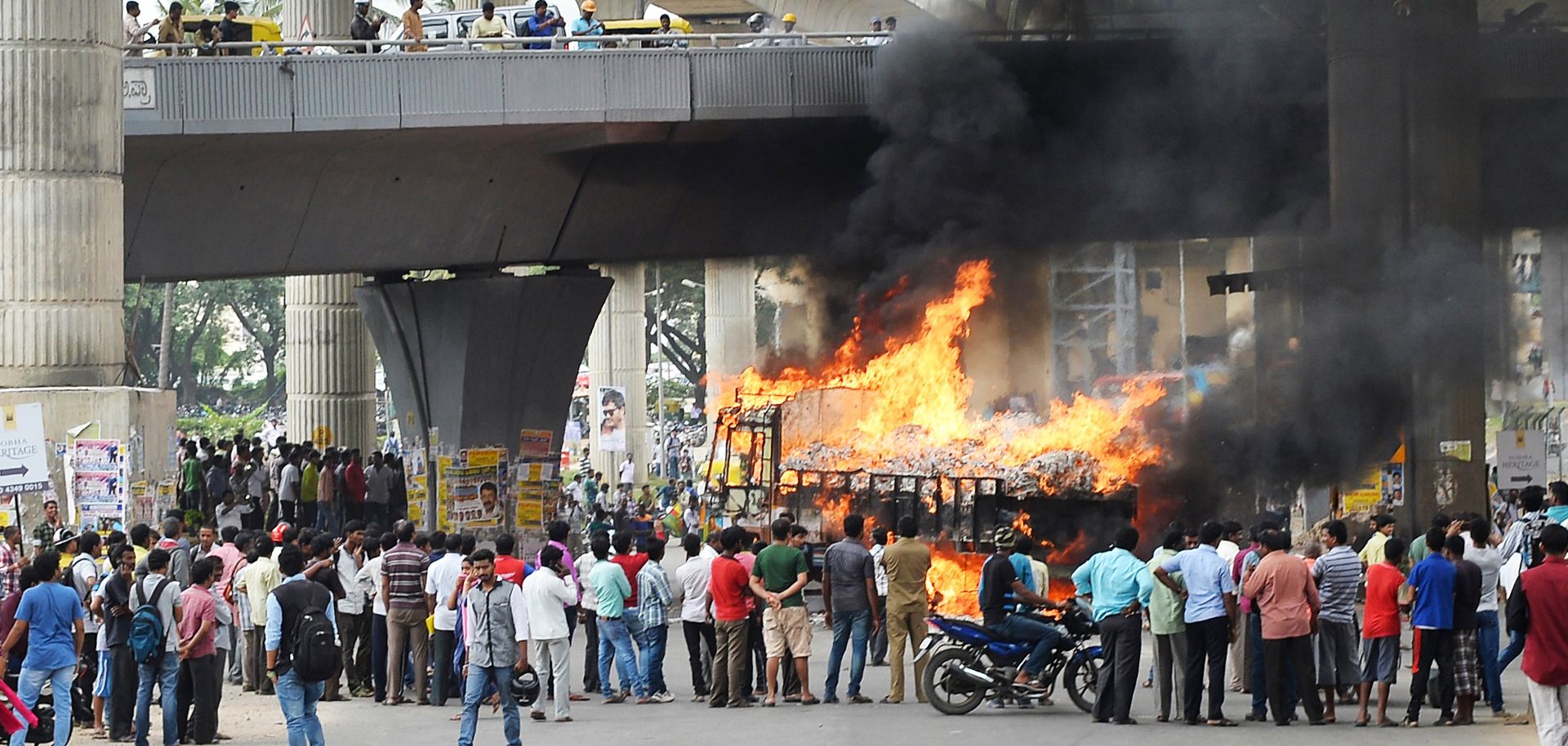ASSESSMENTS
The Source of India's Water Wars
Sep 20, 2016 | 09:00 GMT

(MANJUNATH KIRAN/AFP/Getty Images)
Summary
Rivers sharing boundaries, whether between other countries or internal states, are traditional points of conflict. Often governed by unpopular treaties, they are the subject of intense negotiations. India's transboundary rivers are no exception. Political disputes surrounding India's rivers are made all the more contentious by water stress and scarcity. Growing populations, increased use of groundwater, pollution and general mismanagement of existing resources will constrain India in the long term. And because of a fragmented geography and political system, improved water management policies are difficult to implement.
Weak monsoon seasons in recent years have made water stress in India more apparent. Even in this normal monsoon season, some of the country's basins have experienced deficits, including the Cauvery Basin in southern India. On Sept. 5, India's Supreme Court directed the state of Karnataka to release water amounting to roughly 425 cubic meters per second to neighboring Tamil Nadu state. Though the amount has since been reduced to 300 cubic meters per second, the rulings prompted violent protests across Karnataka state, where Bangalore (India's foremost information technology hub) is located.
Subscribe Now
SubscribeAlready have an account?
